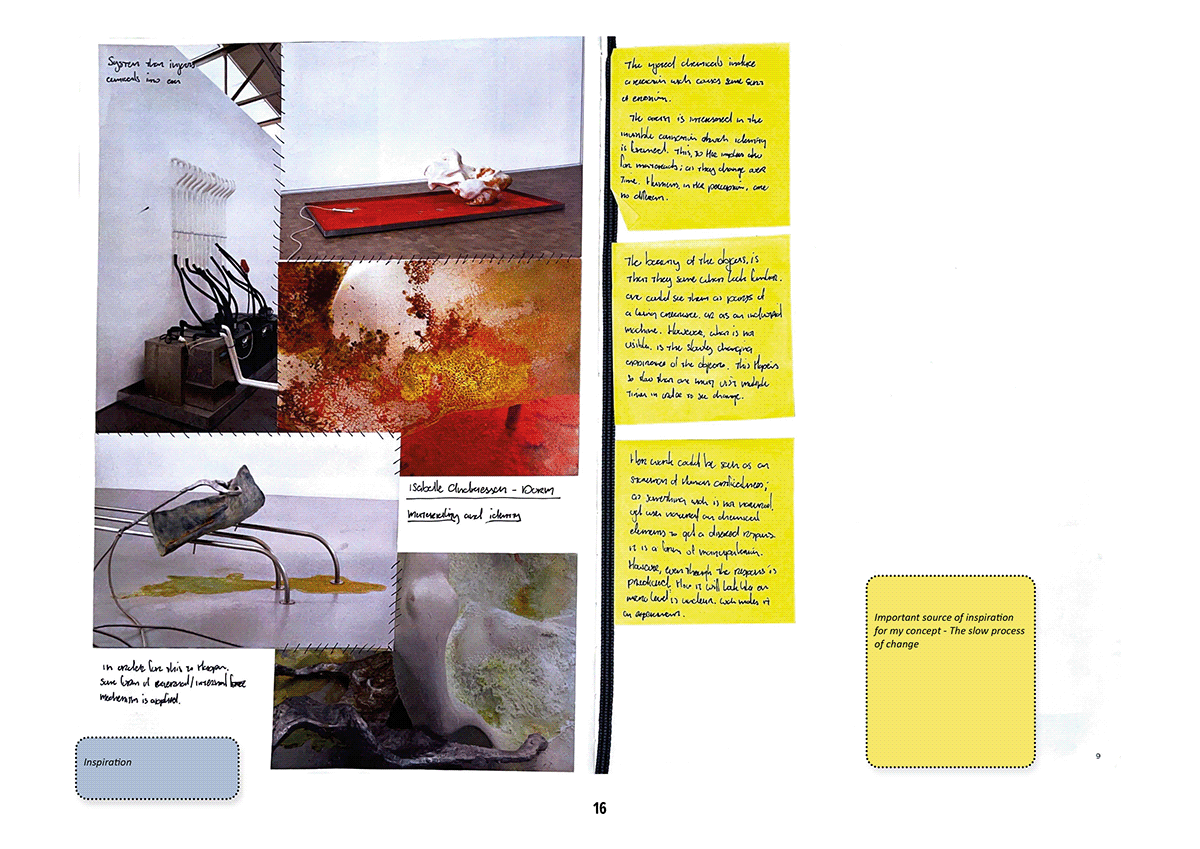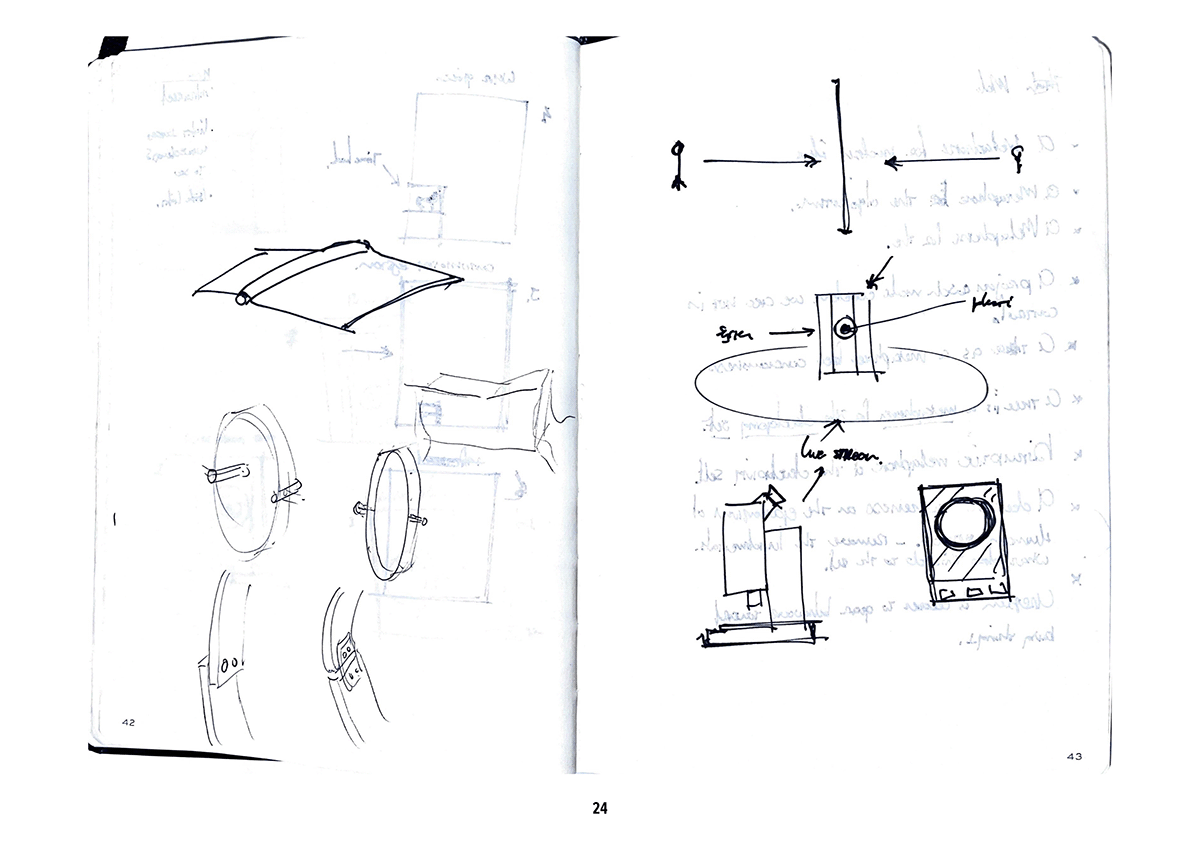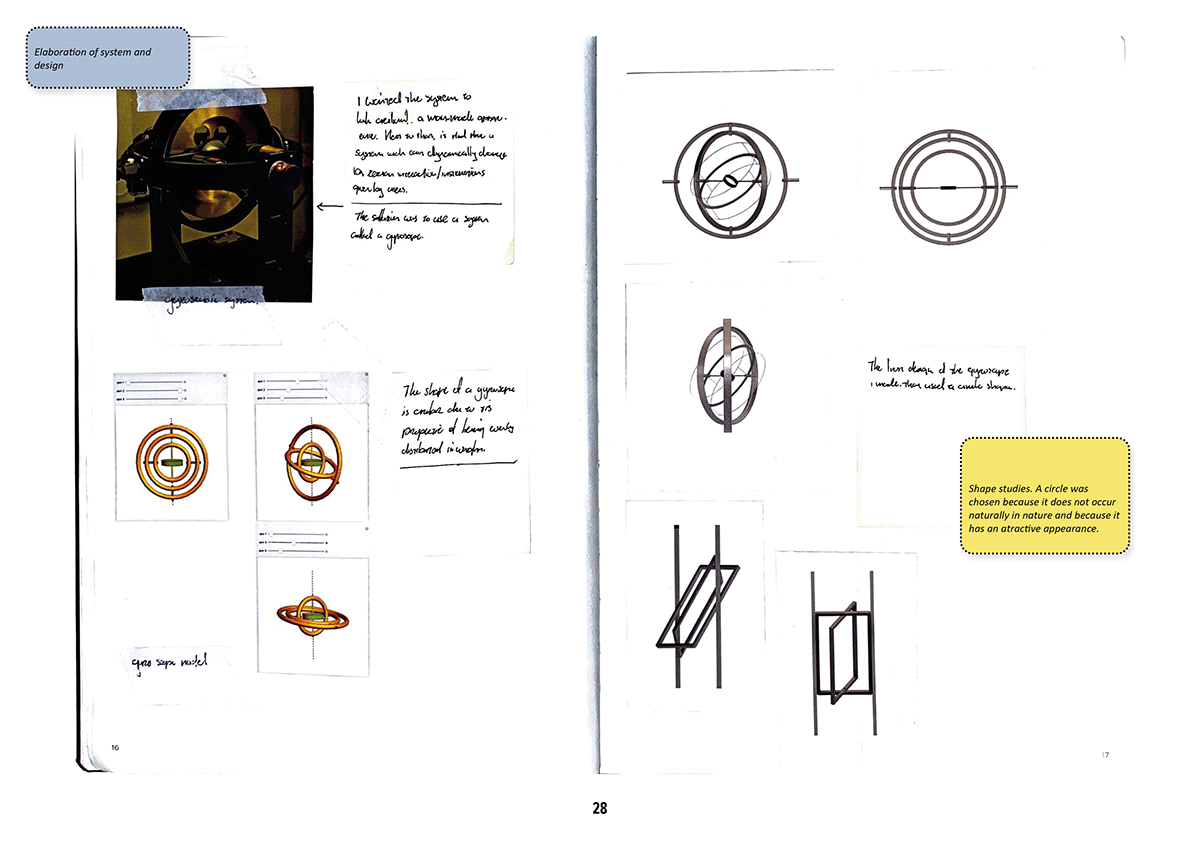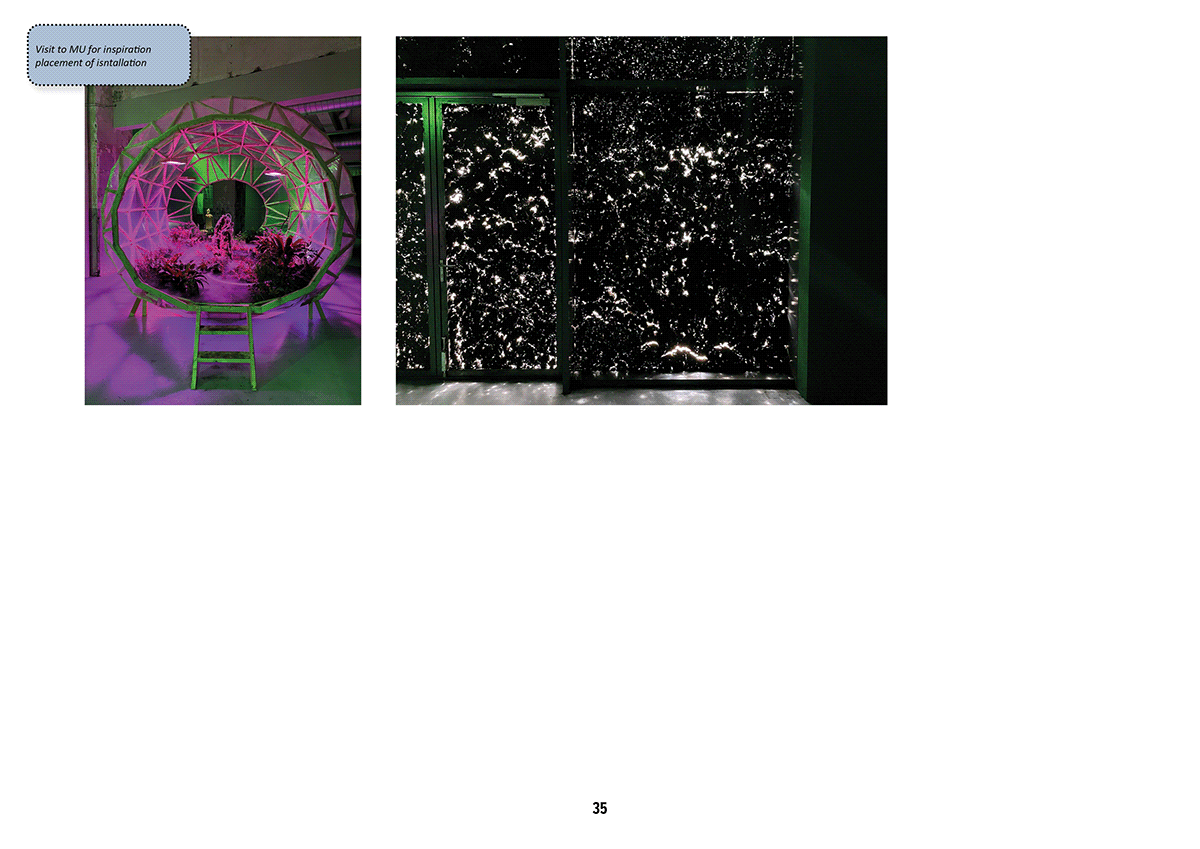ALGORITHMIC IDENTITY
Algorithmic Identity aims to construct a metaphor for the influence of social media on self-concept and worldview, and the context in which it is performed must correspond to the contemporary setting of both the social-virtual and the social-physical world. Social media platforms use computer algorithms to provide person-centred content, changing how individuals interact and perceive each other. This influences their self-concept and allows them to reflect on their identity construction.

PR Poster for Expo containing QR-code to livestream
Animation of livestream
Technological advancements of today have enabled social media platforms to extend social structures into virtual environments. Social media architects now utilise computer algorithms to analyse individual patterns and provide personalised content. The implementation of algorithms on social media has transformed the way in which individuals interact and perceive each other, thereby playing a significant role in identity construction (Netto et al., 2019). As a result, filter bubbles have amplified the frequency and speed at which individuals are aggregated into social groups with comparable perspectives. They also allow for individuals to receive constant feedback loops that impact their self-concept and reflect on their identity construction (Cinelli et al., 2021). Given the abstract nature of slow growth and how identity is defined, Algorithmic Identity communicates the message through simple metaphors that mirror the influence of social media on individuals' development and self-conceptualisation.
THE ISSUE
Social media platforms are virtual arenas that enable their registered users to facilitate, organize and amplify the dissemination of third-party content (Dumbrava, 2021a, p2). These platforms are easily accessible to a wide audience and often provide their services free of charge (Dumbrava, 2021b), which leads to the availability of an abundance of information that can be overwhelming for users (Netto et al., 2019). To address this issue, social media platforms employ sophisticated algorithms that track users' online behavior to filter out irrelevant content, thereby delivering a more personalized and pleasant online experience (Dumbrava, 2021c).
However, this approach can lead to a different problem as it results in limiting the diversity of content, which can cause users to get trapped in a bubble of information (Dumbrava, 2021d). Furthermore, many users are unaware that the information they receive online is pre-selected, which can deprive them of their autonomy and cause them to form a distorted worldview, mistakenly assuming that their perspectives are widely shared (Dumbrava, 2021d).
Moreover, filter bubbles have a more insidious effect as they accelerate the speed and frequency at which individuals are sorted into social groups with similar viewpoints, leading to a constant feedback loop that affects their self-image and shapes their identity (Cinelli et al., 2021). Consequently, algorithmic choices made by social media platforms can create or alter a person's subjective reality, and if not appropriately managed, this can have significant ramifications, causing polarization and distorting public views on critical issues (Dumbrava, 2021c, p8-9).
THE OBJECTIVE, TARGET DEMOGRAPHIC, AND EXHIBITION VENUE
Algorithmic Identity has a clear objective of establishing a metaphor that creates awareness of the impact of algorithmic influences on individuals' self-concept and the role that "filter bubbles" play in shaping one's worldview. The exhibition should function as a metaphorical mirror that conveys this message to the audience, allowing them to view themselves through the lens of algorithmic identity. The use of form, material, texture, mass, space, colour, composition, time and movement should have a clear metaphorical connection to the central issue at hand.
Secondly, the context in which the exhibition takes place must be in line with the contemporary setting of both the social-virtual and social-physical worlds. As such, the target audience should be familiar with and/or use social media as an information/communication platform such as Facebook, Instagram, and TikTok. Moreover, they should also be intrigued by the underlying meanings behind socio-cultural norms in society, frequently visiting museums and engaging in philosophical discussions. The target demographic primarily consists of individuals aged between 13-19 and 19-29 (Oberlo, 2016; Shopify, 2022).
Finally, to achieve its objective, Algorithmic Identity must be exhibited in a venue that aligns with its context. The most suitable venue that meets these criteria is the MU Hybrid Art House located in Eindhoven. MU Hybrid Art House endeavours to explore the boundaries of human understanding of art from a contemporary perspective. Furthermore, MU has an active presence on social media, where it provides context for all its exhibitions. To ensure that the educational aspect of the project is realised, MU also offers various guest lectures and workshops for schoolchildren, students, and teachers. MU also works in close collaboration with Bio Art & Design and hosts the annual Bio Art & Design (BAD) Award, inviting designers and artists to submit interdisciplinary projects to encourage interest and enthusiasm to discuss and explore the social, cultural, and ethical aspects of the (life) sciences through the arts (BAD Award, 2022; MU, 2012).
CONCEPT AND AUDIENCE INTERACTION
Algorithmic Identity is an interactive and dynamic art installation that metaphorically reinterprets the impact of social media algorithms on individual human identity formation. The installation comprises three metaphorical components, and the audience can participate both actively and passively. Therefore, the central element of the project is not the object itself, but rather the spectators and their interactions with it.
The first and primary element is a small tree that serves as a metaphor for individual growth and identity within a virtual and artificial context. This is made evident by suspending the tree on tension wires between the middle frame of the installation, with its roots exposed to the surrounding environment. The choice of this unusual configuration is due to the fact that trees, particularly photosynthetic organisms, do not typically grow without their roots attached to a nutrient substrate. However, aero- and aquaponic systems now enable photosynthetic organisms to grow artificially without soil, providing them with the proper nutrition. Such systems are increasingly used to grow vegetables in urban areas (Kateman, 2020).
The second element, which is similar to a gyroscope, surrounds the central piece. In this context, the gyroscope serves as a metaphor for the algorithm of social media that influences individuals. The choice of using a gyroscope system is crucial because it can displace an object in all three spatial dimensions relative to its position in space. This allows it to use the tree's phototropic properties to control its growth process, as seen in the figure. The system also provides the tree with nutrition, as there is a container with water and a water pump, with a tube mounted to the underside of the outer part of the structure. Attached to the ceiling of the exhibition space is a spherical growing light, which represents an artificial sun that provides a central point where the tree can grow. This concept is inspired by indoor farming systems that use grow lights with red and blue light to provide a light spectrum similar to that of the sun (Philips Lighting, n.d.).
The final element is the interaction between the object and the audience. The part of the construction to which the tree is attached has a protruding frame designed to hold a small camera. This camera is used to follow the growing process of the plant, and individuals participating in the live stream can influence the tree's growth process from a distance. They can do this by manipulating the three crucial elements that give the tree life-giving likes, posting a reaction, or sharing the stream. When interacting with the structure, the orientation of the gyroscope changes in proportion to the tree's growth rate. Using the attention-capture model of social media, participants are encouraged to continue participating in the growth process (N, 2013). Participants in the stream have a limited visual range, which is presented to them as if they are analyzing and controlling their metaphorical selves through a microscope. The more individuals participate in the stream and perform actions, the more unpredictable the tree's growth process becomes. The ever-changing orientation of the structure ultimately influences how the tree grows and distorts it, so it will never reach its intended final shape. This context evokes the illusion of control, which consists of overestimating our behavior's influence on uncontrollable outcomes (Yarritu, Matute and Vadillo, 2014).
Finally, individuals attending the exposition see the system that external visitors influence. In parallel, context is provided to them on-site, enriching them with information about the installation. In addition, they see a screen with real-time data of interactions that external participants conduct. Here, it becomes clear that it is not an individual who controls the system; however, an extensive network of subjective translations into objective actions can only witness true awareness.
MATERIALS, FORM AND CONSTRUCTION
The structure of the installation resembles that of a gyroscope - a device typically used to maintain angular velocity and orientation (Wolfram Demonstrations Project, 2022). However, in this context, it serves as an orientation system to guide the movement of an object along two axes. During the design process, extensive experimentation was carried out to determine the most fitting shape for the gyroscopic system. To align with the installation's metaphorical representation of an algorithm, it was crucial for the structure to exude a mechanical appearance. The exploration began by examining angular geometric shapes that typically possess a rugged aesthetic. Nevertheless, after several rounds of experimentation, it was decided to stick with the initial gyroscope design. The circle was chosen as the ideal shape since it not only suits this type of system but also resembles a form of physical perfection since perfect circles do not occur in nature (Carnegie Mellon University, 2019). Additionally, even though a circle may seem straightforward, it is not easy to replicate without measuring instruments. The circle's seemingly simplistic appearance belies its inherent complexity and simplicity.
CONCLUSION
The exhibition, "Algorithmic Identity," is aimed at creating awareness of the impact of algorithmic influences on individuals' self-concept and the role that "filter bubbles" play in shaping one's worldview. It targets individuals aged between 13-19 and 19-29 who use social media as an information/communication platform and are interested in socio-cultural norms, visiting museums and engaging in philosophical discussions. The exhibition should be exhibited at the MU Hybrid Art House in Eindhoven as it aligns with its context and is actively present on social media. The installation is interactive and dynamic and comprises three metaphorical components, and the audience can participate both actively and passively. The central element of the project is not the object itself, but rather the spectators and their interactions with it.
The Design Process



























REFERENCES
BAD Award (2022). About - Bio Art & Design Award. [online] Badaward.nl. Available at: https://www.badaward.nl/about [Accessed 23 Jun. 2022].
Carnegie Mellon University (2019). Do Perfect Circles Exist? Maybe. - News - Carnegie Mellon University. [online] Cmu.edu. Available at: https://www.cmu.edu/news/stories/archives/2019/march/pi-day.html#:~:text=To%20the%20human%20eye%2C%20circles,%2C%20buttons%2C%20volleyballs%2C%20pizza. [Accessed 5 Jul. 2022].
Dumbrava, C. (2021a). Key Social Media Risks to Democracy Risks from surveillance, personalisation, disinformation, Moderation and Microtargeting. In-Depth Analysis | EPRS | European Parliamentary Research Service. doi:10.2861/135170.
Dumbrava, C. (2021b). Key Social Media Risks to Democracy Risks from surveillance, personalisation, disinformation, Moderation and Microtargeting. In-Depth Analysis | EPRS | European Parliamentary Research Service. doi:10.2861/135170.
Dumbrava, C. (2021c). Key Social Media Risks to Democracy Risks from surveillance, personalisation, disinformation, Moderation and Microtargeting. In-Depth Analysis | EPRS | European Parliamentary Research Service. doi:10.2861/135170.
Dumbrava, C. (2021d). Key Social Media Risks to Democracy Risks from surveillance, personalisation, disinformation, Moderation and Microtargeting. In-Depth Analysis | EPRS | European Parliamentary Research Service. doi:10.2861/135170.
Dumbrava, C. (2021e). Key Social Media Risks to Democracy Risks from surveillance, personalisation, disinformation, Moderation and Microtargeting. In-Depth Analysis | EPRS | European Parliamentary Research Service. doi:10.2861/135170.
Kateman, B. (2020). Is The Future Of Farming Indoors? [online] Forbes. Available at: https://www.forbes.com/sites/briankateman/2020/07/14/is-the-future-of-farming-indoors/.
McLeod, Dr.S. (2022). Self Concept. [online] Simplypsychology.org. Available at: https://www.simplypsychology.org/self-concept.html [Accessed 3 May 2022].
MU (2012). MU | About. [online] Www.mu.nl. Available at: https://www.mu.nl/nl/about/mu [Accessed 23 Jun. 2022].
N, S.M.S. (2013). What is ATTENTIONAL CAPTURE? definition of ATTENTIONAL CAPTURE (Psychology Dictionary). [online] Psychology Dictionary. Available at: https://psychologydictionary.org/attentional-capture/ [Accessed 5 Jul. 2022].
Netto, Y., Carlos, A., Maçada, G., Netto, C. and Gastaud, A. (2019a). THE INFLUENCE OF SOCIAL MEDIA FILTER BUBBLES AND ECHO CHAMBERS ON IT IDENTITY CONSTRUCTION. Progress Papers, p.14.
Netto, Y., Carlos, A., Maçada, G., Netto, C. and Gastaud, A. (2019b). THE INFLUENCE OF SOCIAL MEDIA FILTER BUBBLES AND ECHO CHAMBERS ON IT IDENTITY CONSTRUCTION. Progress Papers, p.14.
Oberlo (2016). What Age Group Uses Social Media the Most? [online] Oberlo.com. Available at: https://www.oberlo.com/statistics/what-age-group-uses-social-media-the-most [Accessed 5 Jul. 2022].
Philips Lighting (n.d.). Vertical farming. [online] Philips. Available at: https://www.lighting.philips.com/main/products/horticulture/vertical-farming [Accessed 5 Jul. 2022].
Shopify (2022). Most Popular Social Media Platforms in 2022. [online] Shopify. Available at: https://www.shopify.com/blog/most-popular-social-media-platforms [Accessed 5 Jul. 2022].
Stringfixer (2020). Aeroponics. [online] Stringfixer.com. Available at: https://stringfixer.com/nl/Aeroponic [Accessed 2 Jun. 2022].
Trees.com Staff (2018). How Light Affects Plant Growth - What You Need to Know - Trees.com. [online] Trees.com. Available at: https://www.trees.com/gardening-and-landscaping/how-light-affects-plant-growth [Accessed 11 May 2022].
Wolfram Demonstrations Project (2022). Gyroscope - Wolfram Demonstrations Project. [online] Wolfram.com. Available at: https://demonstrations.wolfram.com/Gyroscope/ [Accessed 21 Jun. 2022].
Yarritu, I., Matute, H. and Vadillo, M.A. (2014). Illusion of Control. Experimental Psychology, [online] 61(1), pp.38–47. doi:10.1027/1618-3169/a000225.







